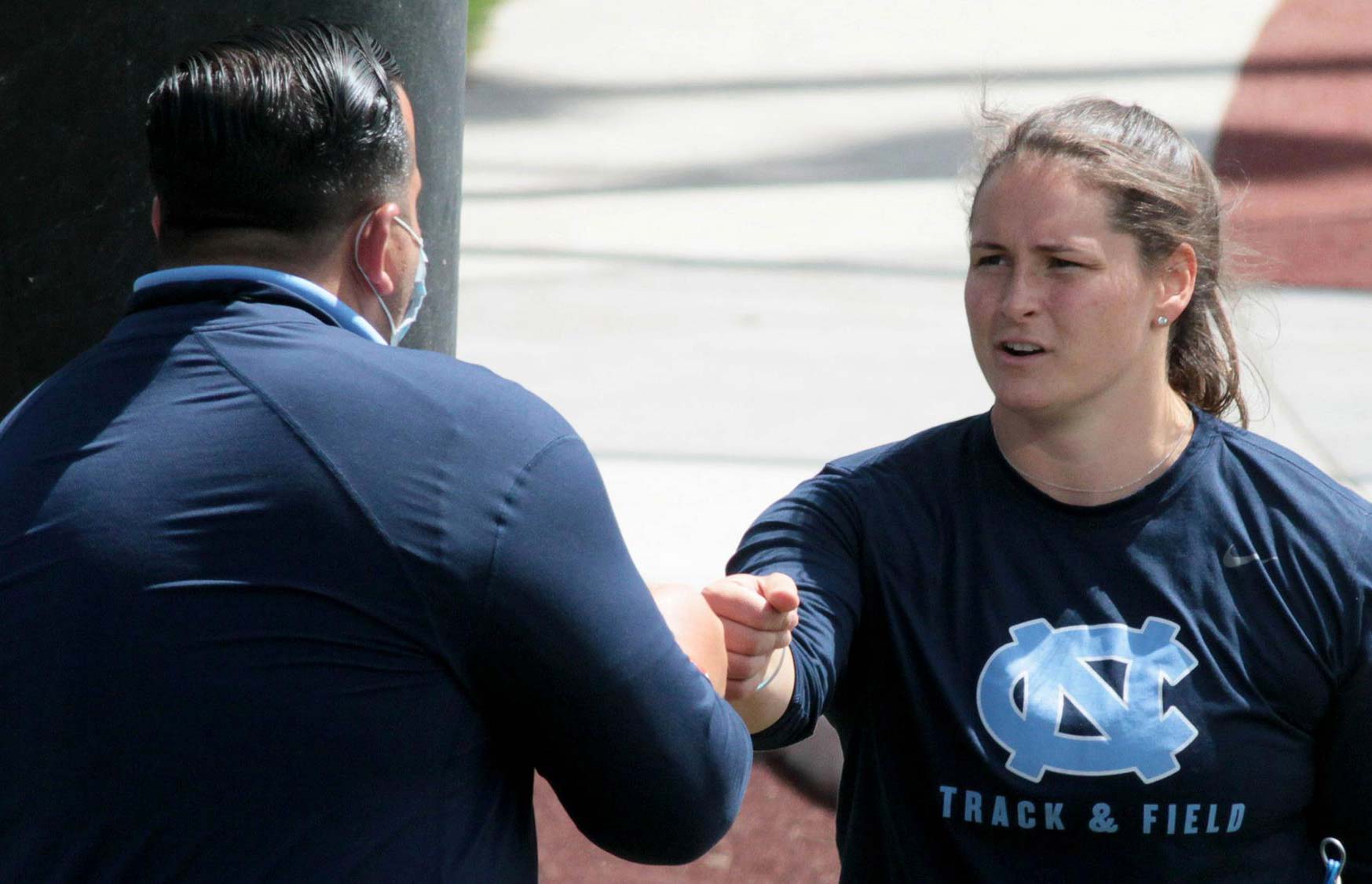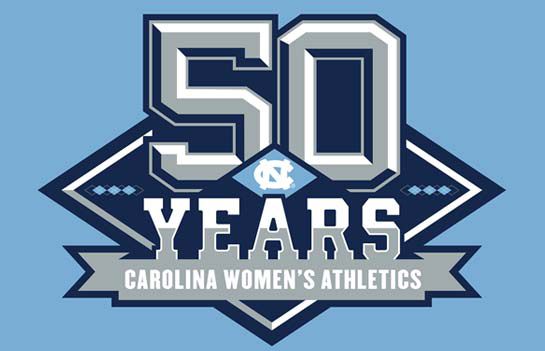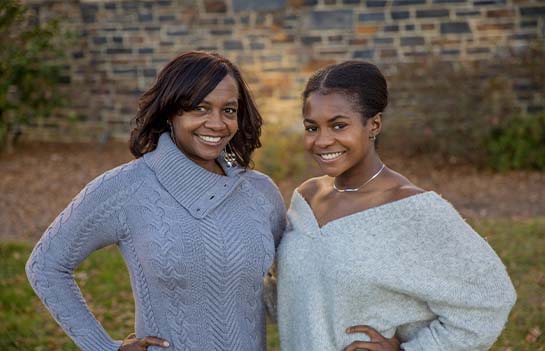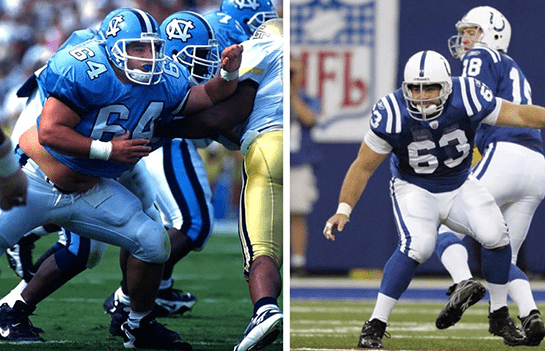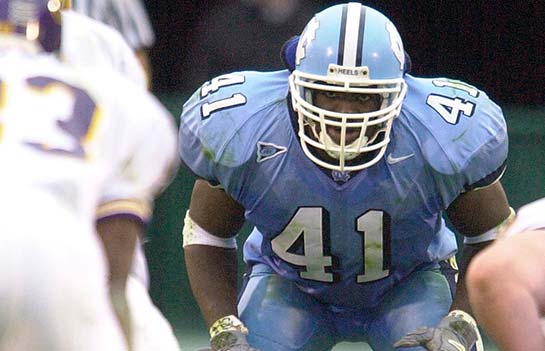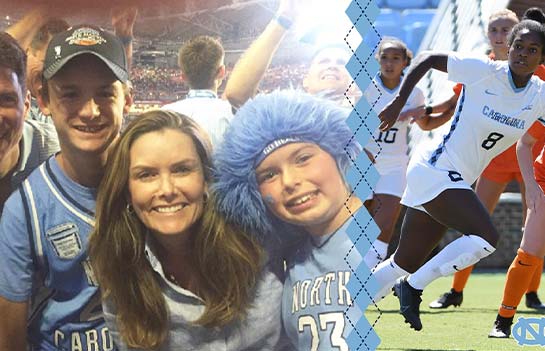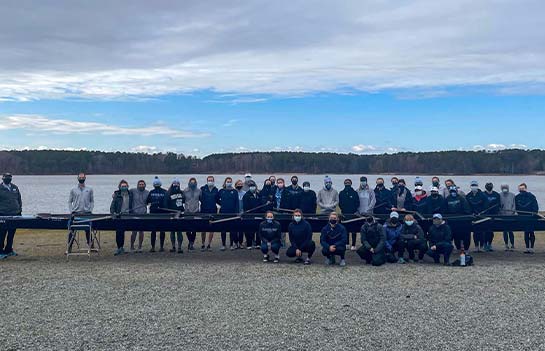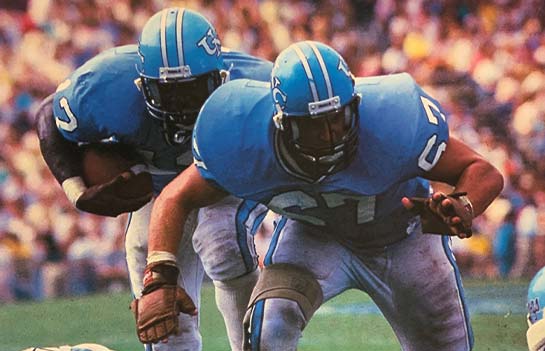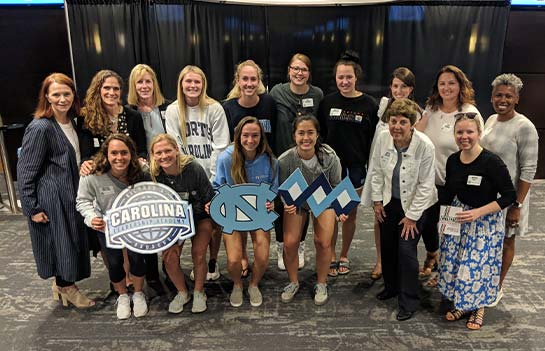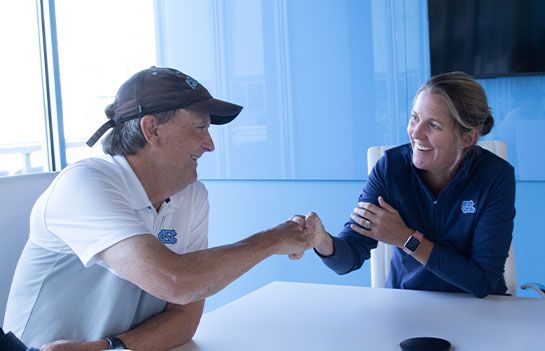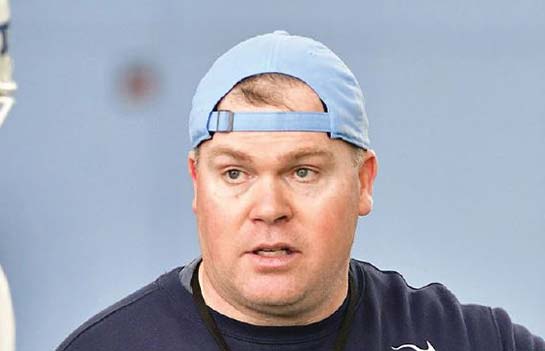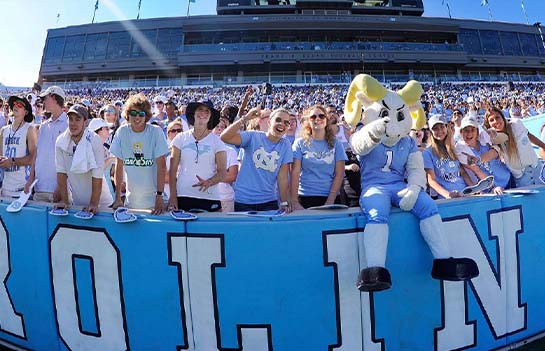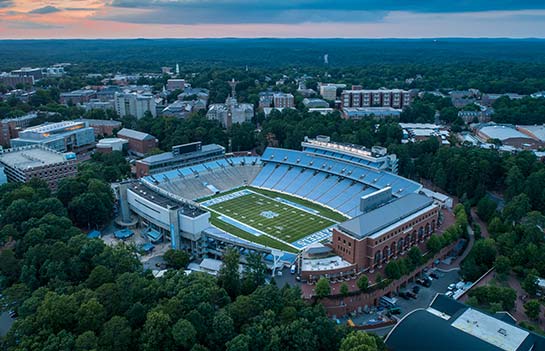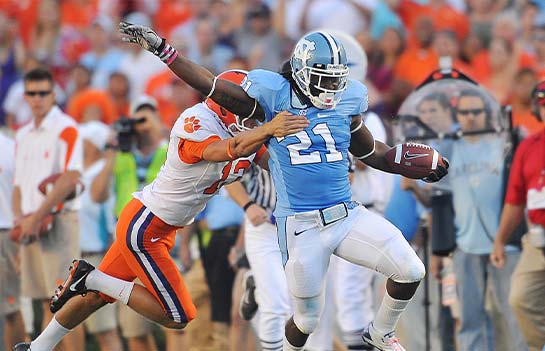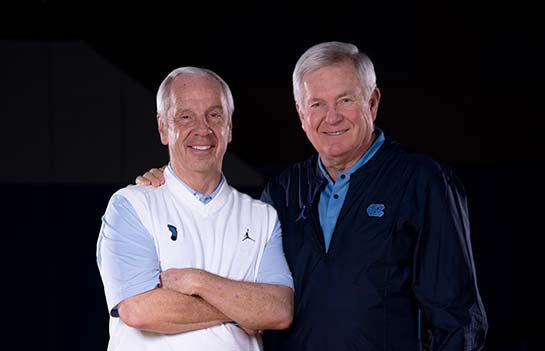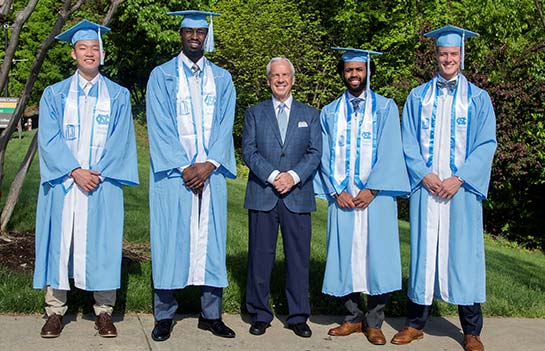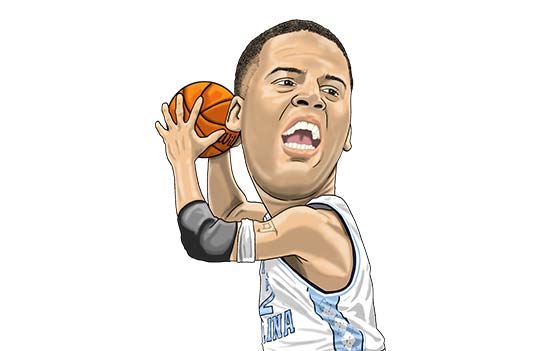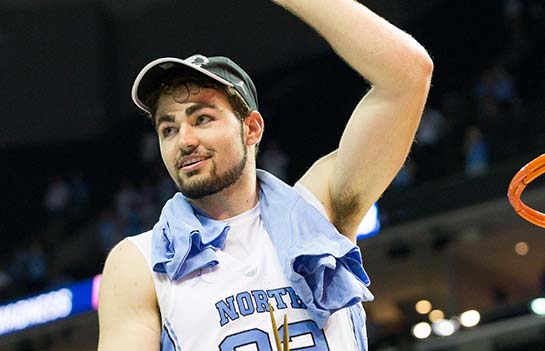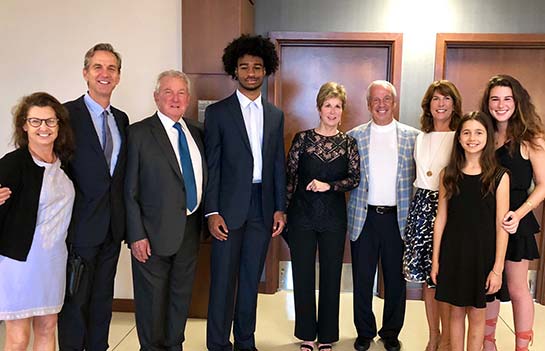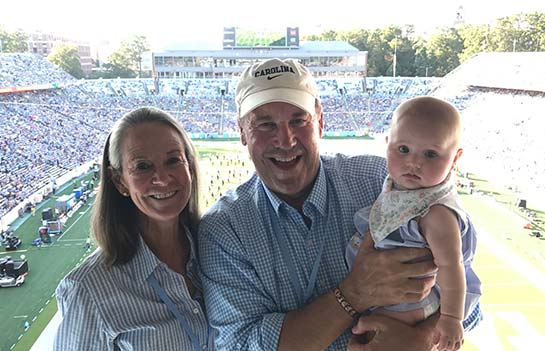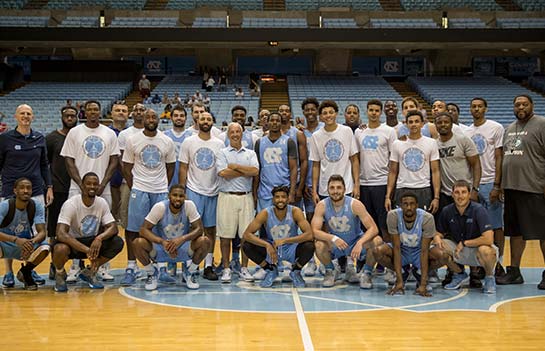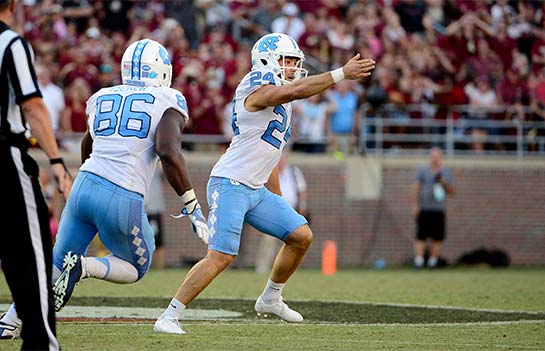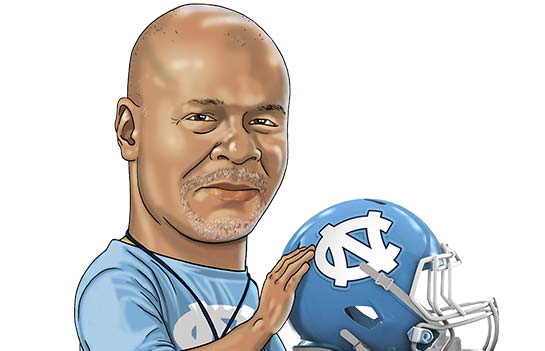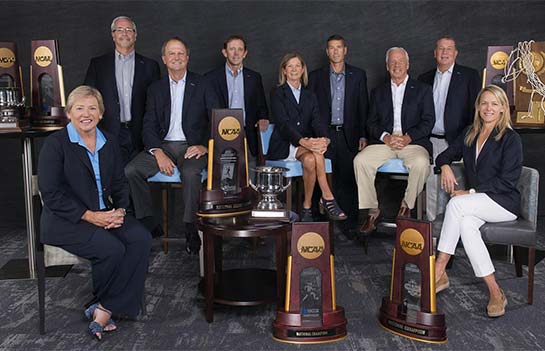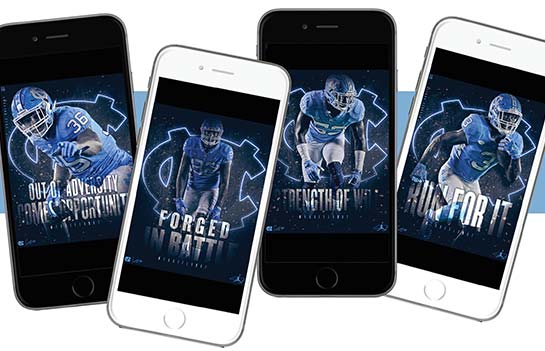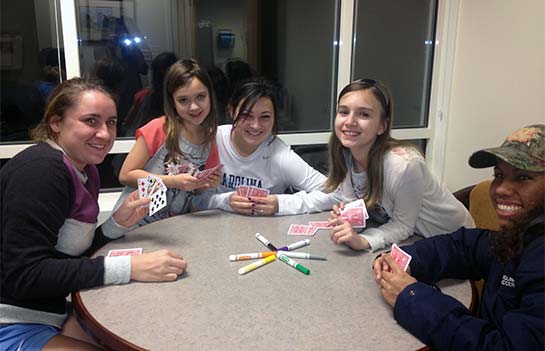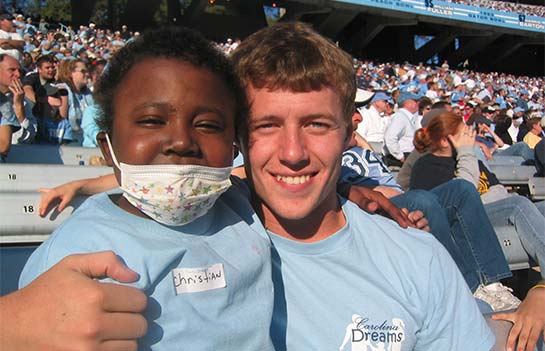ALWAYS ONLINE
ELECTRONIC COMMUNICATION HAS COMPLETELY CHANGED THE WORLD OF FOOTBALL RECRUITING
By: LEE PACE/ Graphics by: JORDAN SAIN
TODAY’S RECRUITING LANDSCAPE IS A WILD WILD WEST WHERE TWEETS AND DIRECT MESSAGES PREVAIL.
Notes are scribbled both with an Apple Pencil on a tablet computer as well as old-fashioned pen on paper. You have sophisticated data management systems that allow a coach at a rest stop on Interstate 40 to quickly look up a prospect’s grandmother’s name and his latest grade in11th grade English.
To write, to call, to tweet, to send a direct message? That is the question.
Trees across the land are breathing a sigh of relief; not nearly so many are being felled today to help college football recruiters manage information and communicate their pitch. So much of it all is phone-to-phone.
“It would be interesting to ask kids how much paper mail they genuinely open,” says Luke Paschall, who just finished his first spring recruiting season as the Tar Heels’ receivers coach. “They get so much mail. One thing they will open is a DM [direct message] on Twitter. It’s right there in front of them. Their phone is always in their hand, it’s always connected to them.”
“It’s an interesting dynamic,” adds Chris Kapilovic, the Tar Heels’ line coach and offensive coordinator. “A lot of kids today are more comfortable texting than talking on the phone. Now kids all have video games on their phones and music on their headsets. With some, social skills and face-to-face communication is a dying art.”
Head coach Larry Fedora wields his phone minute-by-minute to communicate with his staff and prospects. Should he leave it at home by mistake, he’ll make a quick dash to retrieve it.
“You can’t get anything done without it,” he says wryly.
Yet he also spent considerable time in early May crafting hand-written notes to the mothers of key 2019 recruiting targets that were mailed for Mother’s Day along with photos of the kid and his mother.
“The parents like the personal notes,” Fedora says. “They appreciate you took the time to write. Kids? Most of them don’t want a hard copy of anything any more. They want it immediately on their phones.”
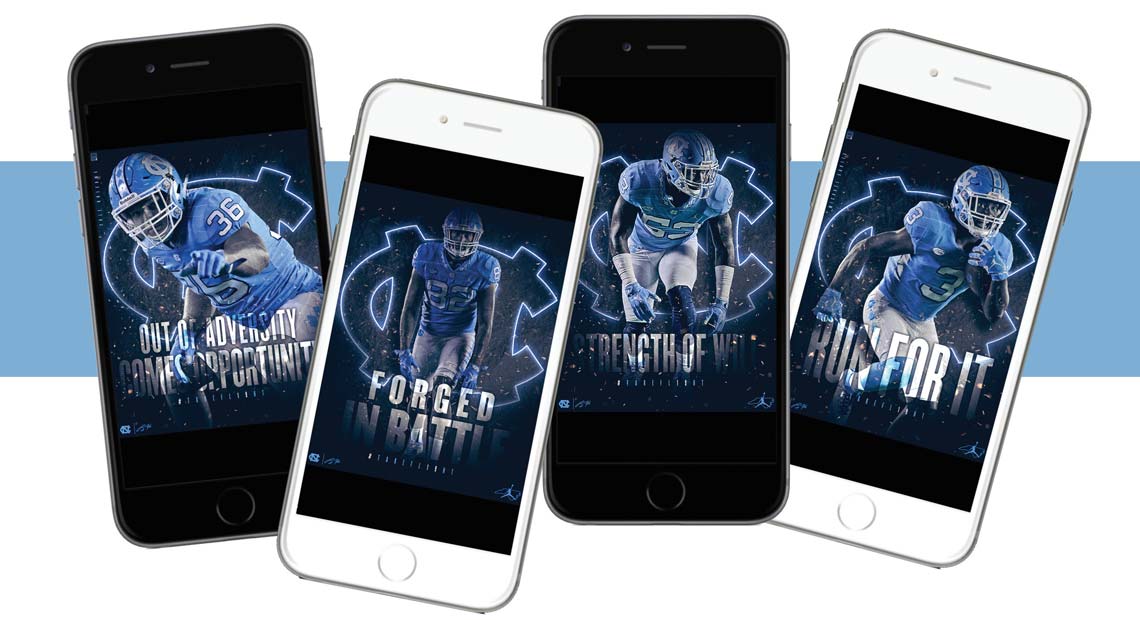
Putting it all in perspective is John Mark Hamilton, the Tar Heels’ director of player personnel who came to Chapel Hill from Appalachian State in the summer of 2017.
On a shelf in his office in Kenan Football Center is a spiral-bound, three-ring notebook of the kind that used to be the information warehouse for assistant coaches going on the road in April and May.
And running on an iPad Pro in front of him is a program called Jump Forward, a database that houses all of the staff’s recruiting information—prospect contact information, parents’ names and numbers, game tape, statistics, coaches’ skill evaluations, academic records and an account of every coach’s communication with that prospect, from face-to-face visits to phone calls.
Hamilton used the Jump Forward program at Appalachian and recommended to Fedora that Carolina install and use it as well. He agreed and the staff has just finished its first spring recruiting period using the program. Hamilton nods toward the notebook: “I tell our coaches, the minute I put that in their hands, it’s out-of-date. This is an efficiency deal. It improves the speed of everything we do.”
Cases in point from May:
As a new staff member, one of Paschall’s priorities during spring recruiting was to visit every school in his geographical footprint and introduce himself to the head coach. He would have had the wrong name to ask for at two schools as firings and hirings had occurred during the spring. But by checking Jump Forward, the information had been logged into the pages for each school with updated information and he knew who to call on at each school, saving the embarrassment of asking to see Coach Jones when Coach Smith was now in charge.
Another new assistant coach, running backs coach Robert Gillespie, evaluated a prospect one week at a school in Paschall’s area before Paschall had visited that school. Gillespie wrote his evaluation in the Jump Forward program, uploaded it and it was there for Paschall to read and have as background before he visited the school.
“The program allows us to be much more organized,” Fedora says.“It’s more convenient and user-friendly for the coaches when they’re on the road. They’re able to do things from their phones or iPads that everyone can instantly see. If I’m calling a kid, I can see everything about that kid on one computer screen—every evaluation, every talking point that a coach has had with that kid.”
Social media has become the air that everyone breathes, particularly teenagers. Twitter, Snapchat and Instagram are the most popular venues. Incoming receiver Jordyn Adams is following nearly 1,500 individuals and entities on Twitter and has 10,000 following him back. Linebacker Matthew Flint took to Twitter in mid-January to explain to Tennessee fans he “never quit” on the program, but the firing of Butch Jones forced him to open his recruiting up and led to him landing at Chapel Hill. Florida receiver Antoine Green committed to Carolina in February and gave the prayer sign and “Shoutout to all the people who unfollowed me” after he opted for the Tar Heels over Florida State and Georgia.
Andre Smith, the linebacker who just left Carolina after his junior season for the NFL, used Twitter extensively beginning in 2011 prior to his arrival at Carolina in the spring of 2016. He says that Twitter played an integral role in winnowing and eventually choosing the Tar Heels over teams such as Miami, Nebraska and Wisconsin.
“There are no restrictions on sending DMs to coaches and them hitting you back,” Smith said. “You could stay in touch with who you wanted to communicate with. You could also go to the university’s athletic Twitter page and do your own research. I learned a lot on my own just doing that.”
Tommy Thigpen joined Fedora’s staff in January as safeties coach and compares the modern era with when he was being recruited in the late 1980s by schools such as Carolina and Clemson to play linebacker. Three decades ago, the Internet didn’t exist, and early mobile phones were the size of bricks and were mounted on a holster built onto the floor of a car. One decade ago, Twitter was just being launched.
“Now the kids are their own publicist,” says Thigpen. “It used to be where a guy from Rivals or Scout could deliver a kid’s message and the kid had to get their message out through them. Now Twitter is giving the kids a platform. The kids used to call those scouting services. Now they market themselves. They put their own pictures out and their lists of top schools and offers out. The social media part of it has changed tremendously.”
Hamilton and the coaches will often initiate contact with a high school player by following him on Twitter. If he follows you back, you can begin a dialogue with the DM function. If a prospect posts unsavory content or retweets messages in bad taste, the coaches see the red flag. If a target is forever tweeting material about a rival school, it’s perhaps smart to back off and look elsewhere.
Managing all the content on social media is a job in itself.
“I have a rule that I try not to go to sleep at night unless I have caught up on my timeline,” Kapilovic says of his Twitter feed. “Sometimes it’s harder than others. It’s a lot to keep up with—what a kid is tweeting, who they’re following, what they’re retweeting. It can take a lot of time. If can overwhelm you if you’re not organized and don’t stay on top of it.”
Jordan Sain is the football staff’s graphic designer who churns out much of the visual material used for printed mailings and social media. He’ll create a wide range of pitches that show prospects in a variety of settings—their face superimposed, for example, in the front of a mansion that an NFL player might own accented with stats extolling the Tar Heel program’s ability to put players in the pros. The Jordan brand “Jumpman” logo appears in many graphics as well.
The folder stored on Sain’s computer after the 2018 signing class was put to bed measured 16.1 gigabytes of data, 4,177 files and 243 folders, each folder for one prospect.
“The creative process is brainstorming, using pop culture, movies, music, apparel ads, shoes/sneakers, you name it,” Sain says. “Anything you can help to identify with young people you use to your advantage. Luckily for us, we have Jumpman, which resonates really well with young people. They are becoming more aware of fashion design and the culture around that.”
The football staff in early summer added a director of creative services to coordinate the staff’s use of social media and the creation of content. In recent years, the effort had been a compilation of ideas and execution from the coaches, Sain, recruiting support personnel and the athletic department’s media and communications office.
“Now we’ll have one person whose job is to be the thinker, the idea man, the creator of our entire branding and messaging campaign,” says Fedora. “I would like for our coaches to not have to sit around thinking about what we can send out. We’ve had a lot of people from different departments involved.
“But this new position will allow us to move at a different speed.” Indeed, in today’s high-tech world of recruiting, there’s just one speed—warp speed.
This story appeared in the JUNE 2018 edition of Born & BredMore Stories
The impact of giving comes through in wonderful stories about Carolina student-athletes and coaches, as well as the donors who make their opportunities possible. Learn more about the life-changing impact you can have on a fellow Tar Heel through one of the features included here:
